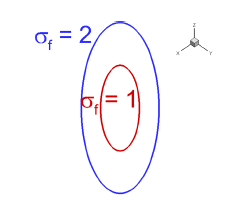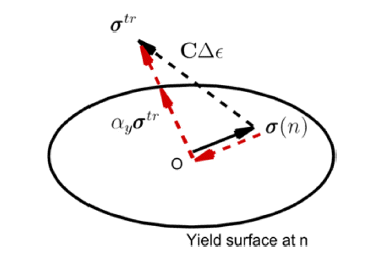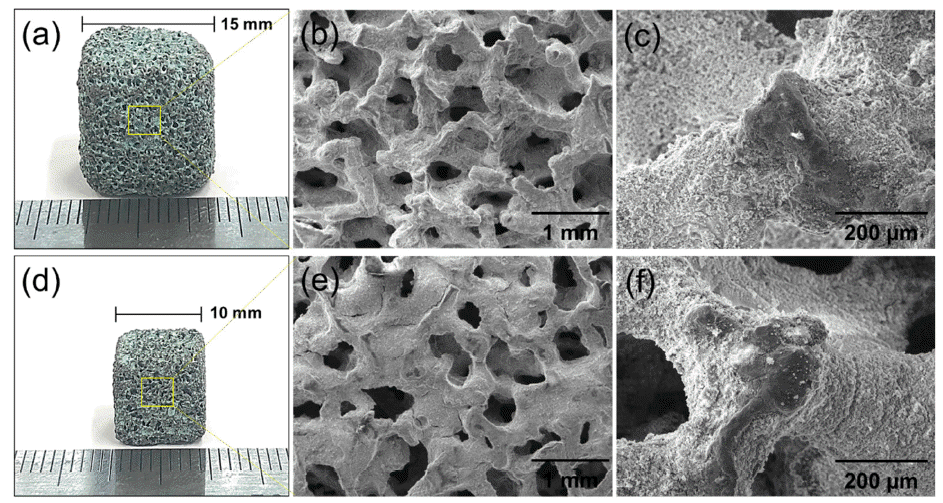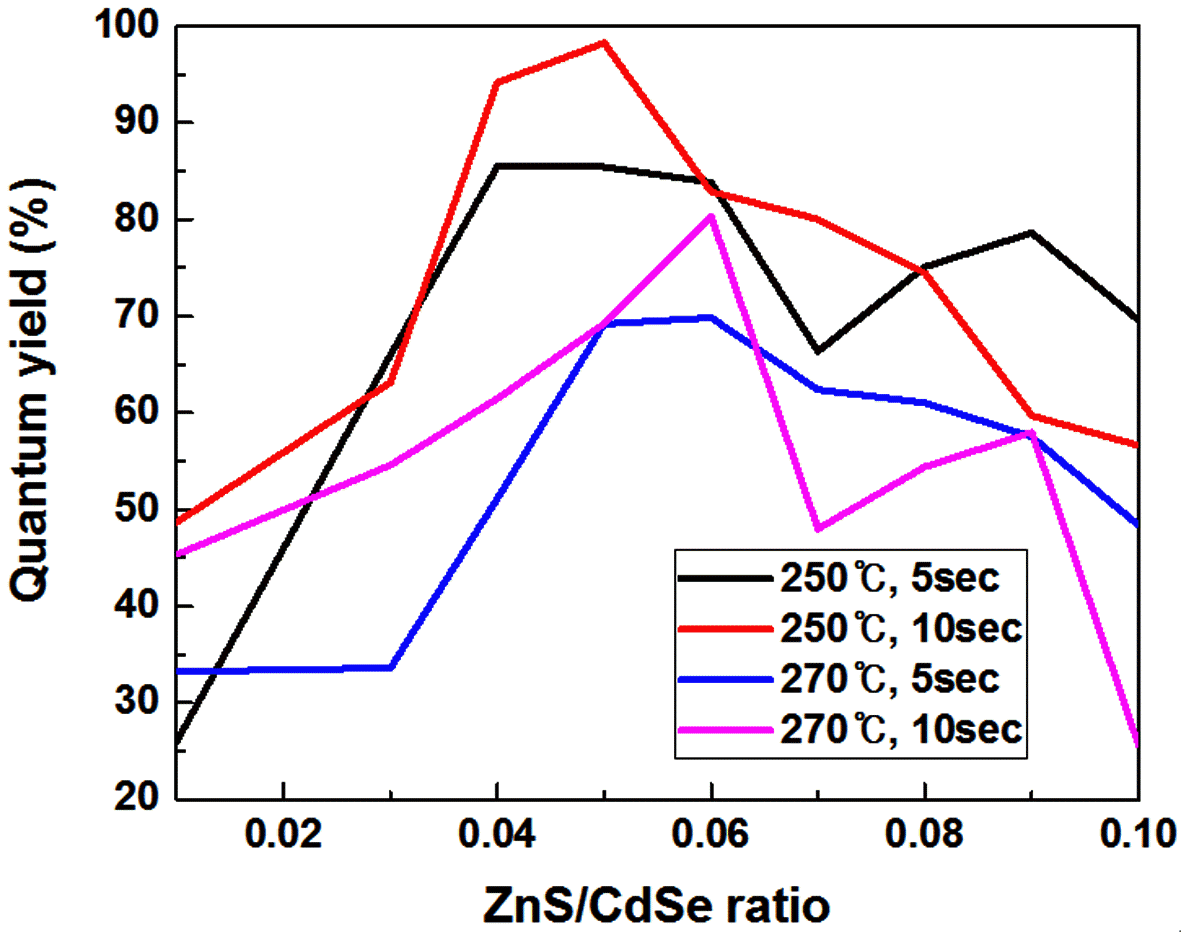Search
- Page Path
- HOME > Search
- [Korean]
- Fixed-point Iteration for the Plastic Deformation Analysis of Anisotropic Materials
- Seung-Yong Yang, Jeoung Han Kim
- J Powder Mater. 2023;30(1):29-34. Published online February 1, 2023
- DOI: https://doi.org/10.4150/KPMI.2023.30.1.29

- 236 View
- 4 Download
-
 Abstract
Abstract
 PDF
PDF A fixed-point iteration is proposed to integrate the stress and state variables in the incremental analysis of plastic deformation. The Conventional Newton–Raphson method requires a second-order derivative of the yield function to generate a complicated code, and the convergence cannot be guaranteed beforehand. The proposed fixed-point iteration does not require a second-order derivative of the yield function, and convergence is ensured for a given strain increment. The fixed-point iteration is easier to implement, and the computational time is shortened compared with the Newton–Raphson method. The plane-stress condition is considered for the biaxial loading conditions to confirm the convergence of the fixed-point iteration. 3-dimensional tensile specimen is considered to compare the computational times in the ABAQUS/explicit finite element analysis.
- [Korean]
- Analysis of Anisotropic Plasticity of Additively Manufactured Structure using Modified Return Mapping Method
- Seung-Yong Yang, Doo-Han Jin, Jeoung-Han Kim
- J Powder Mater. 2022;29(4):303-308. Published online August 1, 2022
- DOI: https://doi.org/10.4150/KPMI.2022.29.4.303

- 460 View
- 2 Download
-
 Abstract
Abstract
 PDF
PDF The plastic deformation behavior of additively manufactured anisotropic structures are analyzed using the finite element method (FEM). Hill’s quadratic anisotropic yield function is used, and a modified return-mapping method based on dual potential is presented. The plane stress biaxial loading condition is considered to investigate the number of iterations required for the convergence of the Newton-Raphson method during plastic deformation analysis. In this study, incompressible plastic deformation is considered, and the associated flow rule is assumed. The modified returnmapping method is implemented using the ABAQUS UMAT subroutine and effective in reducing the number of iterations in the Newton-Raphson method. The anisotropic tensile behavior is computed using the 3-dimensional FEM for two tensile specimens manufactured along orthogonal additive directions.
- [Korean]
- Fabrication of Ni-Cr-Al Metal Foam-Supported Catalysts for the Steam Methane Reforming (SMR), and its Mechanical Stability and Hydrogen Yield Efficiency
- Kyu-Sik Kim, Tae-Hoon Kang, Man Sik Kong, Man-Ho Park, Jung-Yeul Yun, Ji Hye Ahn, Kee-Ahn Lee
- J Korean Powder Metall Inst. 2021;28(3):201-207. Published online June 1, 2021
- DOI: https://doi.org/10.4150/KPMI.2021.28.3.201

- 677 View
- 11 Download
- 1 Citations
-
 Abstract
Abstract
 PDF
PDF Ni–Cr–Al metal-foam-supported catalysts for steam methane reforming (SMR) are manufactured by applying a catalytic Ni/Al2O3 sol–gel coating to powder alloyed metallic foam. The structure, microstructure, mechanical stability, and hydrogen yield efficiency of the obtained catalysts are evaluated. The structural and microstructural characteristics show that the catalyst is well coated on the open-pore Ni–Cr–Al foam without cracks or spallation. The measured compressive yield strengths are 2–3 MPa at room temperature and 1.5–2.2 MPa at 750°C regardless of sample size. The specimens exhibit a weight loss of up to 9–10% at elevated temperature owing to the spallation of the Ni/Al2O3 catalyst. However, the metal-foam-supported catalyst appears to have higher mechanical stability than ceramic pellet catalysts. In SMR simulations tests, a methane conversion ratio of up to 96% is obtained with a high hydrogen yield efficiency of 82%.
-
Citations
Citations to this article as recorded by- The Experimental Investigation of a 98% Hydrogen Peroxide Monopropellant Thruster Comprising the Metal-Foam-Supported Manganese Oxide Catalyst
Pawel Surmacz, Zbigniew Gut
Aerospace.2023; 10(3): 215. CrossRef
- The Experimental Investigation of a 98% Hydrogen Peroxide Monopropellant Thruster Comprising the Metal-Foam-Supported Manganese Oxide Catalyst
- [Korean]
- Synthesis and analysis CdSe/ZnS quantum dot with a Core/shell Continuous Synthesis System Using a Microfluidic Reactor
- Myung Hwan Hong, So Young Joo, Lee-Seung Kang, Chan Gi Lee
- J Korean Powder Metall Inst. 2018;25(2):132-136. Published online April 1, 2018
- DOI: https://doi.org/10.4150/KPMI.2018.25.2.132

- 1,062 View
- 10 Download
-
 Abstract
Abstract
 PDF
PDF Core/shell CdSe/ZnS quantum dots (QDs) are synthesized by a microfluidic reactor-assisted continuous reactor system. Photoluminescence and absorbance of synthesized CdSe/ZnS core/shell QDs are investigated by fluorescence spectrophotometry and online UV-Vis spectrometry. Three reaction conditions, namely; the shell coating reaction temperature, the shell coating reaction time, and the ZnS/CdSe precursor volume ratio, are combined in the synthesis process. The quantum yield of the synthesized CdSe QDs is determined for each condition. CdSe/ZnS QDs with a higher quantum yield are obtained compared to the discontinuous microfluidic reactor synthesis system. The maximum quantum efficiency is 98.3% when the reaction temperature, reaction time, and ZnS/CdSe ratio are 270°C, 10 s, and 0.05, respectively. Obtained results indicate that a continuous synthesis of the Core/shell CdSe/ZnS QDs with a high quantum efficiency could be achieved by isolating the reaction from the external environment.
TOP
 kpmi
kpmi


 First
First Prev
Prev


